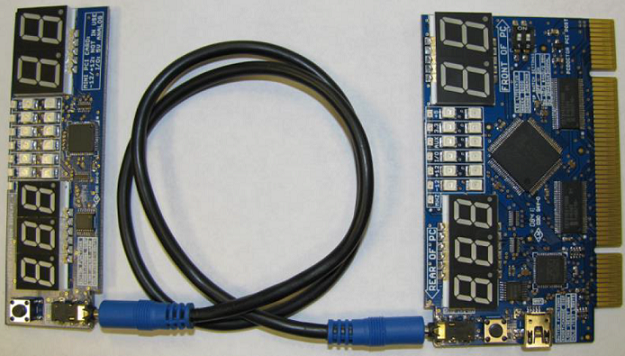Purpose
The purpose of this document is to provide additional information on the PC-Doctor PCI & Mimi PCI POST cards.
Description
The POST (Power On Self-Test) cards display codes that indicate what the system BIOS (Basic I/O System) is doing prior to loading the operating system. The last POST code from the BIOS is shown on the 2-digit LED display if the BIOS should fail to load the operating system. If the BIOS should fail to load the operating system, this code can be helpful in determining the reason for the failure.
In addition, the POST Cards display voltage levels for the system and the clock speed of the PCI/miniPCI bus. Being aware of the voltage levels can be helpful in diagnosing power issues that may not be exposed by the Power Supply Tester. The cards can be seen below:

The green and yellow LEDs (one for each bus voltage) indicate if voltage levels are within limits set by the PCI/miniPCI specification. The smaller three-digit LED display shows the selected measurement value. A small yellow LED indicates the current selection. Pressing the button briefly will change the current selection.
- Green: Selected mode is currently within specifications.
- Yellow: Selected mode is outside of specifications. This LED will remain lit until reset by the user.
- Green and Yellow: Selected mode is currently within acceptable range but was out of range in the past.
You can also define additional mode options using the 2-selector switch as listed below:

Caution: Do not switch operating modes with the POST card inserted in the system!
Additional Information
Displays for the voltage levels and clock speed are not located on the miniPCI POST Card and are only accessible with the remote display connected.
POST cards include a non-functional USB port that is intended for future use.
POST codes are unique to each PC manufacturer. You can obtain these codes from technical support websites for the related PC manufacturer, or visiting http://www.pcdservicecenter.com/biospostcodes.